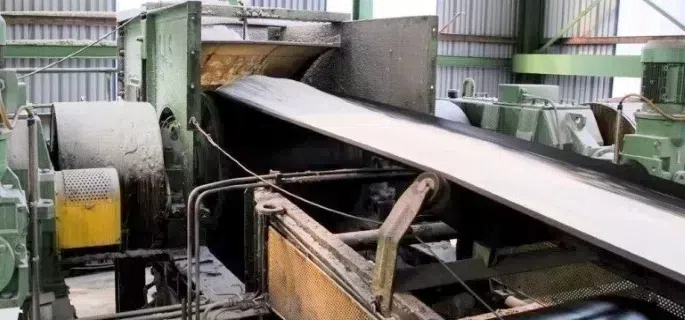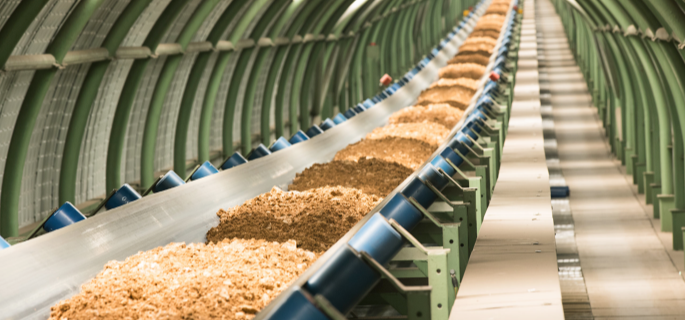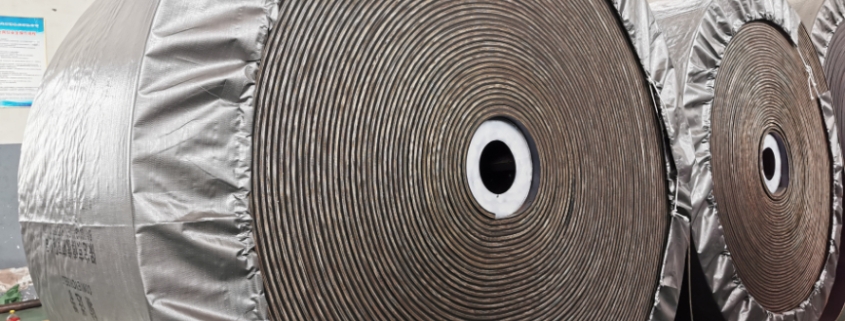Designing a belt conveyor system requires a meticulous approach to ensure efficiency, safety, and durability. This blog series, titled “Exploring Belt Conveyor Design Steps,” aims to guide you through each crucial stage of the conveyor design process, from initial consultations with industry handbooks to the application of complex design calculations. We’ll cover structural considerations, material selections, and integrate the latest technological advancements. Each section of this series is crafted to help you understand the integral components and techniques essential for successful conveyor system implementation. Join us as we delve into the intricate belt conveyor design steps, ensuring you have the knowledge to develop a system tailored to your operational needs. Through this series, gain a deep understanding of the steps involved in designing an efficient and durable belt conveyor system.
Read moreIn the realm of belt conveyor chute design, the Chute Design Handbook PDF and Transfer Chute Design Manual PDF serve as indispensable resources for engineers and operators. These documents offer comprehensive insights into optimizing material flow within conveyor systems. Understanding the principles outlined in these manuals is vital for achieving seamless integration of chute designs into conveyor systems. Moreover, a thorough overview of chute design calculations is crucial. These calculations ensure that the design meets the specific requirements of the conveyor system, facilitating efficient material transfer and minimizing operational disruptions.
Read moreThe conveyor belt design manual serves as a comprehensive guide for professionals involved in conveyor system design and operations. The conveyor belt design manual exhibit conveyor belt construcyion, capacities, diameters, specifications, quality, considerations… It aims to provide in-depth insights into the design, installation, maintenance, and selection of conveyor belts, catering to engineers, technicians, and managers in various industries.In the conveyor belt design manual, detailed information is provided on fire safety tests essential for ensuring the reliability and safety of conveyor belts. These tests include the drum friction test, laboratory flame test, gallery fire test, and electrical resistance test. Each test method is meticulously explained, covering procedures, standards, and industry best practices.Within the conveyor belt design manual, significant attention is devoted to the evaluation of wear and tear in conveyor belts. Techniques for measuring thickness, assessing changes in profile, and early detection of damage are discussed in detail. Additionally, strategies for scheduling repairs and minimizing downtime are outlined to ensure uninterrupted conveyor operation.
Read moreConveyor belt design parameters encompass the essential variables and considerations crucial for the efficient functioning of conveyor systems. These parameters dictate the structural integrity, operational efficiency, and overall performance of conveyor belts in various industries. Understanding and optimizing conveyor belt design parameters are fundamental in ensuring smooth material handling processes, minimizing downtime, and enhancing productivity. By comprehensively evaluating and implementing these parameters, organizations can achieve cost-effective conveyor systems tailored to their specific operational needs.Several key factors influence conveyor belt design parameters, including material characteristics, operational environment, throughput requirements, and safety regulations. Material properties such as size, shape, weight, and abrasiveness impact the selection of belt material, width, and strength. Environmental conditions such as temperature, humidity, and dust levels determine the choice of conveyor components and maintenance schedules. Throughput requirements dictate conveyor speed, capacity, and layout design. Safety regulations mandate the inclusion of emergency stop systems, guarding, and other safety features. Balancing these factors is essential in optimizing conveyor belt design parameters for maximum efficiency and reliability.
Read moreUnderstanding how to calculate belt conveyor system parameters is crucial for the design, operation, and maintenance of these critical pieces of equipment.Basic calculate belt conveyor system ensures your conveyor design is accurate and efficient, preventing excessive system demands. In this introduction, we’ll explore the foundational concepts behind belt conveyor systems and highlight why precise calculations are not just beneficial but essential. Accurate calculations ensure operational efficiency, enhance safety, and prevent costly downtime and repairs. By the end of this section, you’ll gain an insight into how integral these calculations are to achieving a well-functioning conveyor system. This knowledge is key to optimizing the performance and longevity of conveyor belts across various industries.
Read moreA telescopic belt conveyor system is a sophisticated logistics tool, equipped with a base and an extendable section that can be telescoped outward directly into a container or truck. This feature facilitates the smooth transition of goods between the transport vehicle and the conveyor, reducing manual handling and increasing efficiency.In the context of modern logistics operations, the telescopic belt conveyor system is essential for enhancing operational efficiency and safety. It dramatically speeds up the process of loading and unloading goods, reducing labor costs and minimizing the potential for accidents. This system not only streamlines warehouse operations but also supports higher throughput, which is crucial for meeting the demands of increased shipping volumes.
Read moreIn the realm of material handling,used conveyor rollers near me often emerges as a cost-effective solution for businesses looking to optimize operations without the hefty price tag of new equipment. Not only does the acquisition of used conveyor rollers significantly reduce expenditure, but it also aligns with sustainable practices by repurposing existing machinery. This approach not only alleviates financial burdens but also contributes to environmental conservation by reducing waste and the demand for new raw materials.
Read moreIn modern industrial operations, the importance of rubber covered conveyor rollers cannot be overstated. These rollers are crucial for the efficient movement of goods across various stages of production and packaging. By employing a rubber coating, these rollers offer enhanced grip, which is vital for transporting items securely without slippage. Additionally, the rubber covering significantly reduces wear and tear on both the rollers and the conveyed materials, extending the lifespan of the equipment. This protective layer also helps in minimizing operational noise, contributing to a safer and more pleasant working environment.
Read moreIn the Philippines, the market for used conveyor belts is flourishing, providing numerous opportunities for industries to leverage cost-effective and sustainable solutions. By opting for used conveyor belt for sale Philippines, companies can significantly reduce their expenses while still acquiring functional and reliable equipment. This practice not only supports financial savings but also aligns with global sustainability efforts. Reusing conveyor systems minimizes waste and conserves resources, a crucial step towards eco-friendly business practices. As industries grow increasingly conscious of their environmental impact, the demand for such sustainable solutions continues to rise, making used conveyor belts an attractive option for many businesses across the nation.
Read moreNeyveli, a burgeoning industrial hub, has long been recognized for its expansive lignite mines and power generation units. This setting makes it an ideal backdrop for discussions on industrial solutions, particularly those that enhance both efficiency and sustainability. Among these solutions, the use of used conveyor belt in Neyveli stands out as both an economical and environmentally friendly option. Reusing conveyor belts not only helps industries cut down on expenses but also contributes to waste reduction. As businesses in Neyveli strive to optimize their operations without incurring hefty costs, these used conveyor belts offer a viable path to achieving their operational and sustainability goals. This introduction sets the stage for a deeper exploration into how these belts are utilized and the benefits they bring to the local industry.
Read moreContact us
No. 11, Bocheng Street, Boye County, Baoding City, Hebei Province, China
+86 13803289191
NEWS
 How a Multi Ply Conveyor Belt Enhances EfficiencyJune 18, 2024 -
How a Multi Ply Conveyor Belt Enhances EfficiencyJune 18, 2024 - What is Conveyor Belt Ply and Conveyor Belt Ply AdhesionJune 18, 2024 -
What is Conveyor Belt Ply and Conveyor Belt Ply AdhesionJune 18, 2024 - Necessary Cold Resistant Conveyor BeltJune 18, 2024 -
Necessary Cold Resistant Conveyor BeltJune 18, 2024 -










